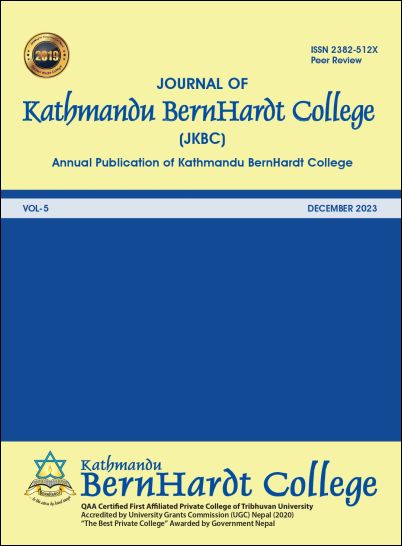Impact of Capital Expenditure on Economic Growth: A Study of Nepal
DOI:
https://doi.org/10.3126/jkbc.v5i1.66771Keywords:
Capital Expenditure, Recurrent Expenditure, Government Expenditure, Effect Performance, Economic growthAbstract
In countries like Nepal, government spending objectives range from promoting market-driven stability to intervening for alleviating suffering and preventing business loss, reflecting the tension between laissez-faire and interventionist approaches in economic development. The study explores government expenditure's role in Nepal's economic growth using econometric models like the Engle-Granger Cointegration Test and Error Correction Model. Recurrent, capital, and total expenditures are compared with GDP as indicators of Nepal's economic growth, showing significant positive relationships. The Unit Root Test indicates all variables becoming stationary after differencing once. The Johansen Test reveals 2 co-integrating equations, indicating enduring relationships among variables. Co-integrating Relation analysis demonstrates RE, CE, TE, and C's significant impact on GDP, with a low Durbin-Watson statistic suggesting possible autocorrelation. The Error Correction Term analysis highlights the significance of D(RE), D(CE), D(TE), and C, while ECT(-1) is significant at a 10% level. While the model explains a significant portion of GDP variation, additional factors must be considered for policymaking.




